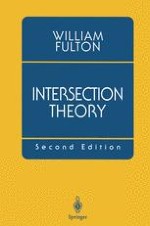1998 | Buch | 2. Auflage
Über dieses Buch
From the ancient origins of algebraic geometry in the solutions of polynomial equations, through the triumphs of algebraic geometry during the last two centuries, intersection theory has played a central role. The aim of this book is to develop the foundations of this theory, and to indicate the range of classical and modern applications. Although a comprehensive history of this vast subject is not attempted, the author points out some of the striking early appearances of the ideas of intersection theory. A suggested prerequisite for the reading of this book is a first course in algebraic geometry. Fulton's introduction to intersection theory has been well used for more than 10 years. It is still the only existing complete modern treatise of the subject and received the Steele Prize for best exposition in August 1996.
Anzeige
